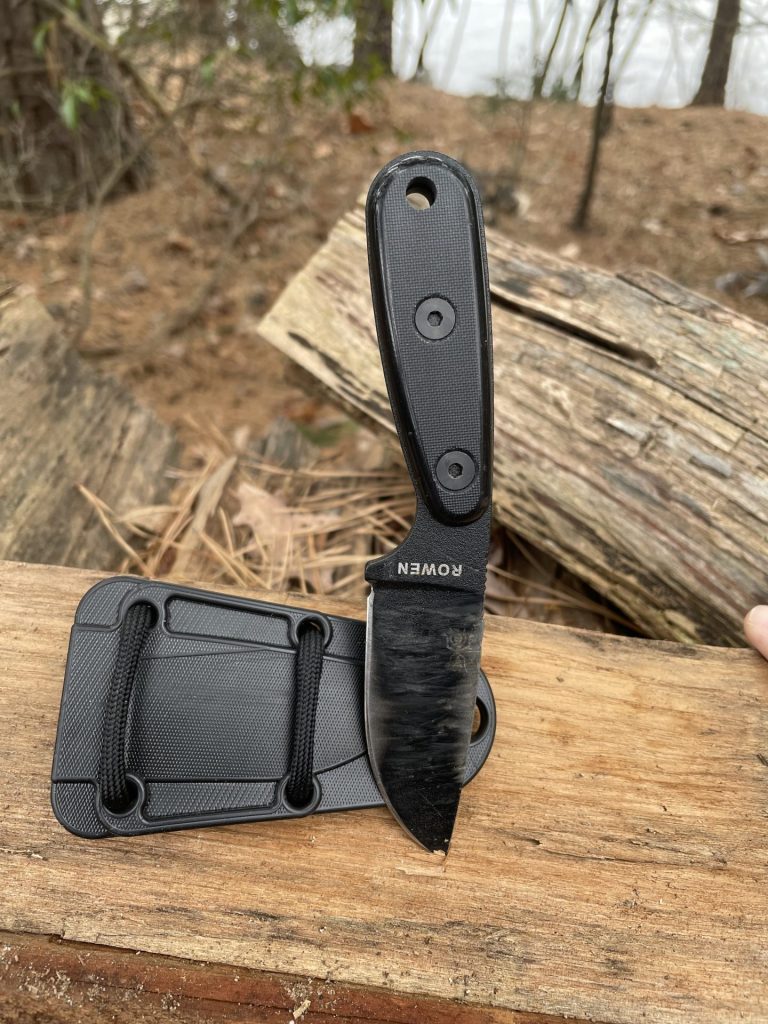
“Have no fear of perfection. You’ll never reach it.” ~Salvador Dali
As for myself, I prefer to carry a fixed blade over a folder. I’m not one of those folks that will tell you that folding knives are pre-broken, though. I’d like to think that some of my folding knife reviews (like my Schrade Divergent, OKC RAT II, Buck Nobleman, and CJRB Maileah reviews) can testify to the spirit of fairness. All the same, there are a lot of things a fixed blade can do that a folder can’t.
That, however, is a topic for another article. This one is about my ESEE Izula (pictured above) and two practical ESEE Izula mods I’ve made that, in my eyes, improve the performance of the knife.
Let’s get one thing straight. With no modding whatsoever, this little thing is an absolute beast. You can do everything you want with it, including batoning, and it will not flinch. I’ve pushed this thing through hefty, knotty white oak quarters and it doesn’t even hiccup.
But can you make it better, or at least user friendly? Sure, and these two ESEE Izula mods will get you there.
Strike a Fire

First, let’s talk about the elephant in the room: ESEE’s perennial powder coat.
I’m not against the powder coat. It most certainly is there for a reason. Except for a select handful of ESEE knives made with select super-steels like CPM-S35VN, this Izula, like the rest, is made with 1095.
This alloy, 1095, is a great alloy. It has just enough carbon to make it hard enough to take a really good edge. You can make it really sharp, sharp enough to shave, even. It does get dull fast, but the upside of the alloy and temper is that it’s also easy to resharpen, even in the field.
The other upside is the steel is insanely tough. Very hard, brittle steels tend to chip or snap when stressed. That’s unlike with this knife.
But I digress. The purpose of the powder coat is to protect this knife from corrosion, as 1095, for all its virtues, is dreadfully rust-prone. Let’s just put it this way. I once split up some pine for a fire with my ESEE 4. The pine was green – not wet. I sheathed my ESEE 4, and when I drew it the next day, there was rust on the edge.
We call this flash rust, and the Izula, with its 1095 blade, is prone to it.
So ESEE bakes on this crazy powder coat (I don’t know what the chemistry of it is, if you do enlighten me in the comments and I will update the post) to protect the knife against rust. It does a good job. The steel’s pretty well protected, except along the laser-cut logo and the edge.
But there’s a big downfall. How many of you like to use your knives to strike sparks from a ferro rod when you’re out there? I know I do, as do (likely) many of you. It seems like a basic knife skill to me.
But you can’t do it with the ESEE Izula, or the ESEE 4, or any other powder-coated ESEE knife. The spine geometry is right. It’s squared. But the powder coat gets in the way and it just won’t throw sparks off a firesteel.
I once read in Outdoor Life that you could mod a knife with a soft spine to throw sparks by creating a bit of a spine edge with a screwdriver. That trick, though useful, won’t work here.
You need to remove a little bit of the powder coat from the spine if you want this hack to work.
Some bloggers out there will tell you just to strip all of the powder coat off the knife. You can do this with various solvents, and apparently it’s an easy mod. I don’t want to do that, though, because then my knife will be crazy corrosion prone. I could just oil it or apply a patina, but that’s extra work. Plus, I like the way the knife blade looks with a little of the powder coat worn off. I know that’s aesthetic, but still.
So, what can you do? Well, there are two methods. One involves a round file, and the other involves the use of a rotary tool with a small sanding attachment. Either one works, I used the latter and finished it with a round file.
What you need to do is create a small round depression in the top of the knife spine with one of those edges creating a relatively sharp angle (90° or more acute) that you can use to dig into a ferro rod and shave sparks off it.
Pick a spot on the knife spine close to the shoulder, choose a round sanding bit, and apply it to the blade in the manner shown below.
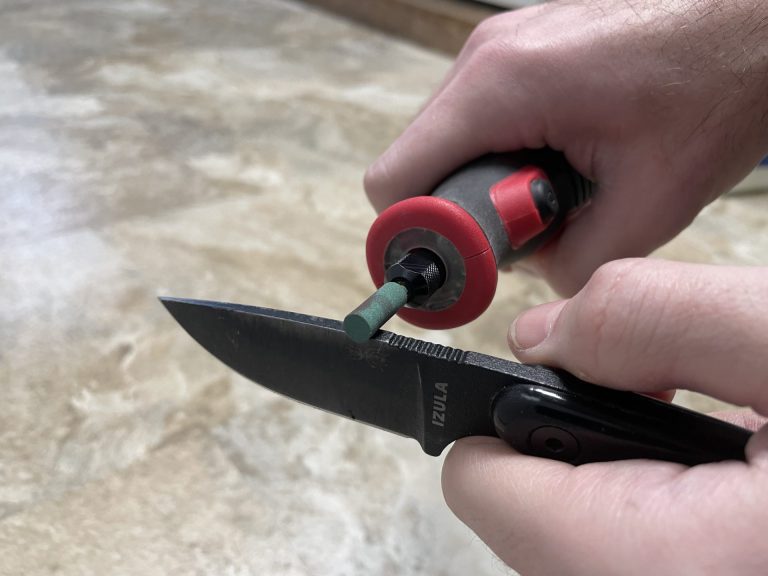
You need to make sure you grind the spine at a slight angle. Do not cut this mod squarely into the blade. For right-handed people, you want the sharper edge of this depression on the left side of the blade, so that when you press it against the firesteel, there’s a sharper angle to dig into it and pull the sparks.
Once you have the depression started, you can finish it with a round file, as seen in the image below. Again, you can see in this image that I’m finishing it at an angle.
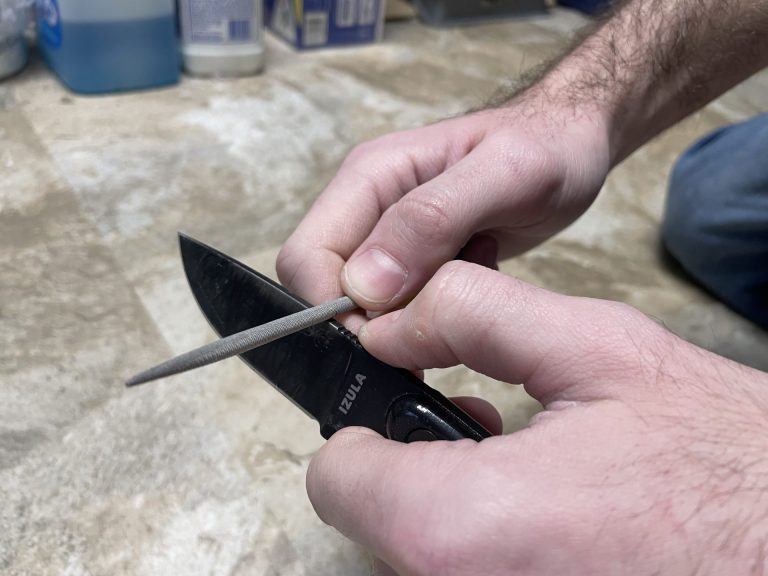
One thing I want to point out here is that you don’t want to cut too deep. Actually, you want to remove as little powder coat and steel, cumulatively, as possible. Any weird angles in the steel will create what is called a “stress riser” that puts the steel at risk of cracking or outright breaking. It’s not likely with this type of alloy, but it could happen.
When you’re done, the knife spine will look like this:
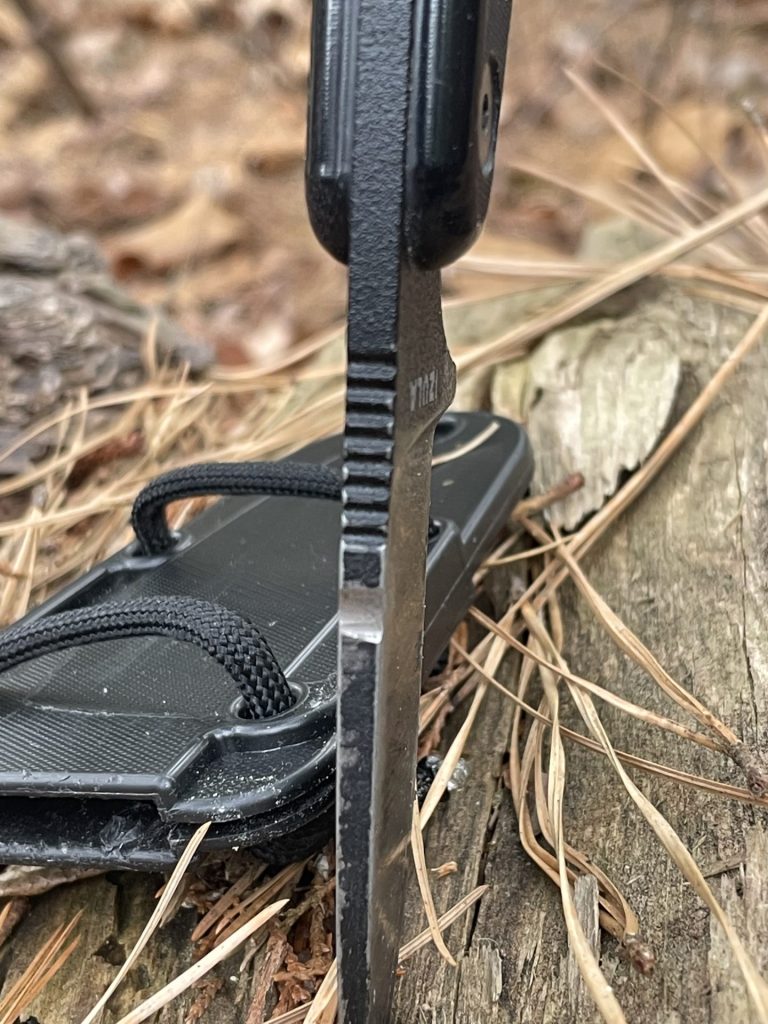
If you’ve done the angle right, as I suggested, and exposed the naked steel, you should have little problem from now on using your ESEE Izula to coax a shower of sparks from a ferro rod.
Rigged for Scout Carry
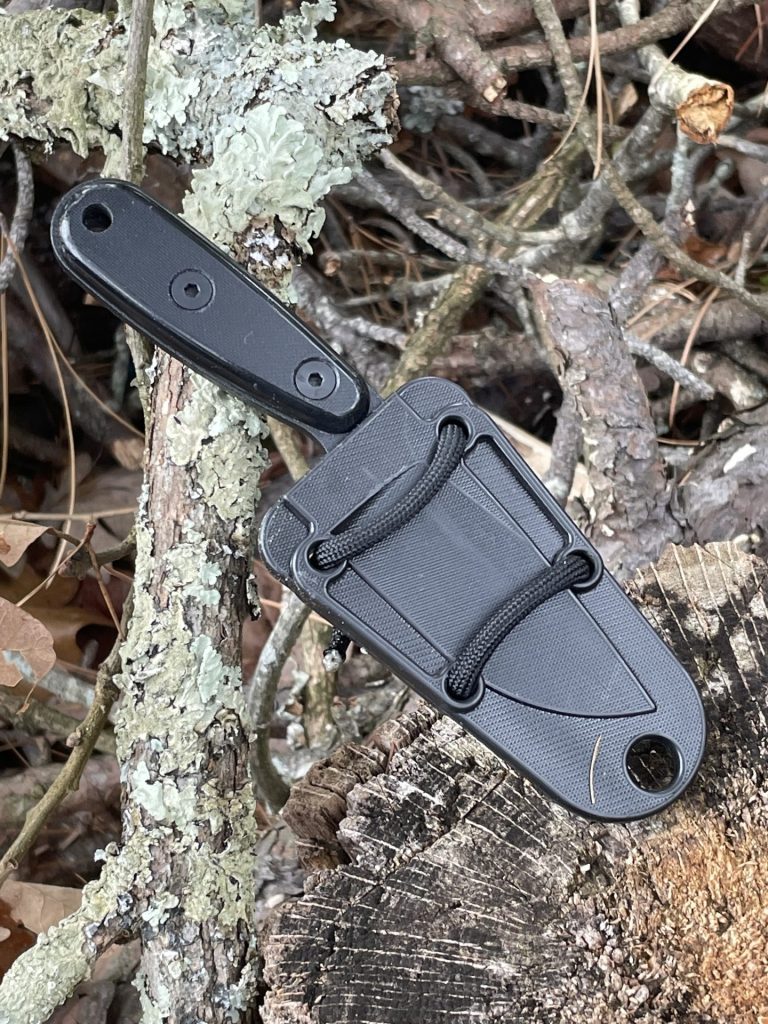
The second ESEE Izula mod I’d like to cover is actually not quite a mod to the knife itself, but a mod to the sheath.
The thermoplastic sheath that comes standard with the ESEE Izula is MOLLE compatible and comes with a little clip plate that makes it easy to attach to your belt. A knife this small is easy to carry tip down outside the belt, but I prefer scout carry, and the plate it comes with doesn’t permanently affix to your belt. It can be knocked off.
Of this, I’m not a fan. Nothing against the clip plate ESEE provides; it’s quality. I just like something a little more permanent and modular. Plus, with a MOLLE-compatible sheath, modding it is a cinch.
All you need is a little bit of paracord. On a sheath of this size, You’ll only need to take about a foot and a half to two feet of paracord. Fuse both ends in a candle or lighter flame (my Clipper is perfect for this).
For right-handed users that will be drawing on the right side and so will want the knife handle accessible at the right side of their back, insert the two ends through the sheath in such a manner as shown below so that it creates a half-loop on the right side of the sheath looking into the opening.

Then cross the top line of the paracord over to the next opening and send it through, as shown below. Repeat the process so that you have two loops of paracoard on the right hand side of the sheath (facing the sheath’s throat) through which you will be able to pass your belt. It will look like the picture below.
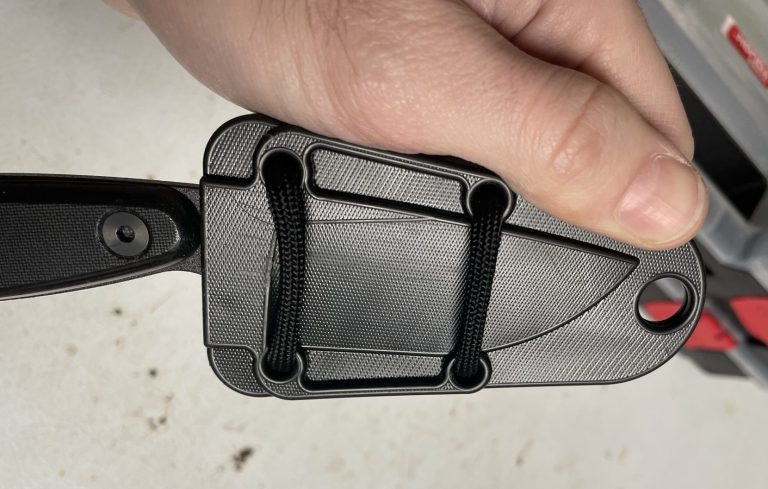
On the other side of the sheath, you will have a loose end of paracord and a few extra inches of slack. Insert the loose end through a cord lock, then tie two extra overhand knots on the other side of then cord lock to prevent the paracord from slipping back through in the other direction in the event that the cord lock fails. You can tuck or tie the remaining slack at the end of the line through the neck knife eyelet at the point of the sheath if you want, or leave it free. It rarely gets in my way.
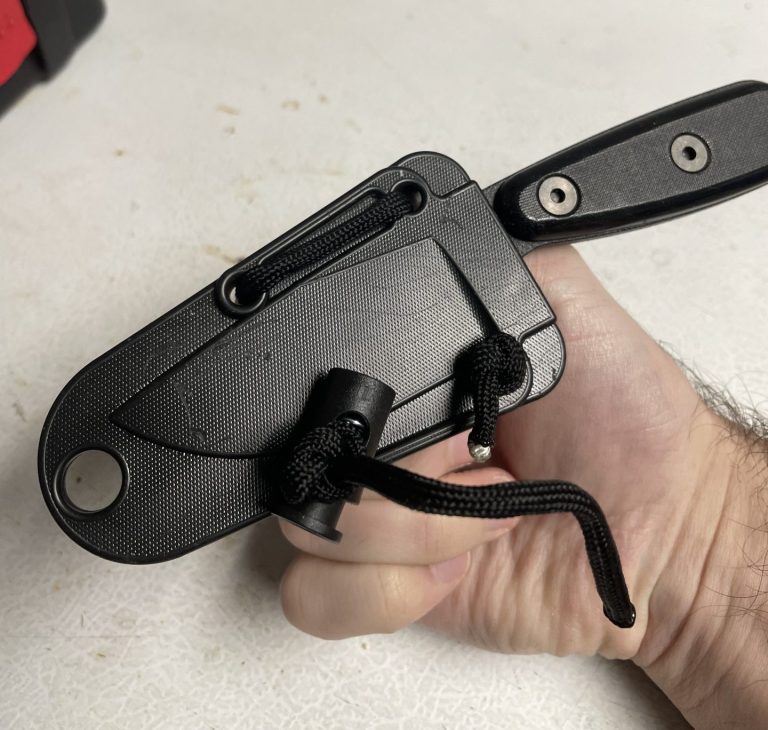
Cord locks are cheap, easy to install, and allow for near-immediate adjustments of the scout carry rig, either to remove the sheath or to loosen it to accommodate different belt sizes and thicknesses.
If you use the cord lock hack, just make sure you still finish the trailing ends of the pcord with a square not or some other knot; that way, if the cord lock ever does fail, the two tag ends won’t be able to slide through, and you won’t lose your knife.
I like to carry most fixed blades in this scout carry configuration, when the sheath allows for it; not just the Izula. But the Izula is the perfect knife for this, making it one of the most practical ESEE Izula mods (in my estimation).
It’s the size of the knife that makes it perfect. You see (this merits an entire blog dedicated to defense of scout carry, honestly) larger fixed blades are perfect for carrying in scout carry because it keeps the blade from riding down your leg or hip, or getting in the way when you sit down. Larger, heavier blades also feel like they’re in the way and weigh you down when they’re on one side of your hip. nd
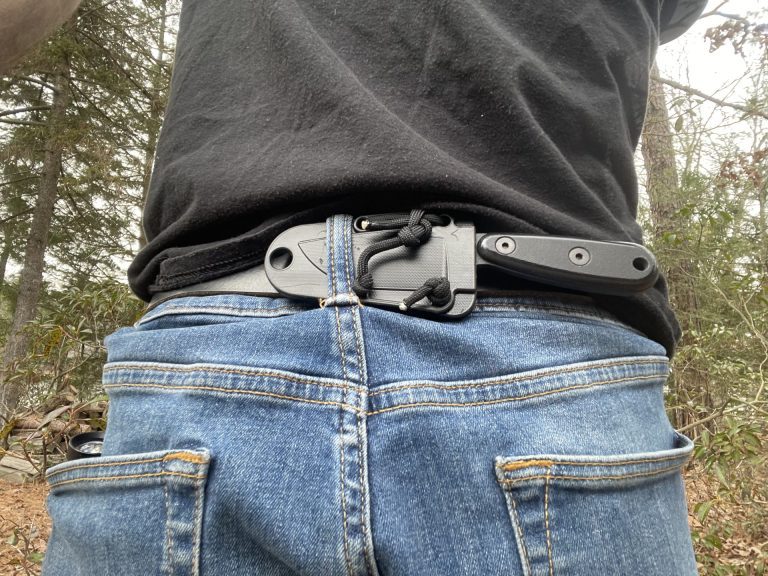
When you switch to scout carry, it’s way more balance, you don’t feel like one side of your body is getting dragged down, and the blade and handle are entirely out of the way.
The Izula, being so small, is the sort of knife you could almost forget is on your belt when you carry like this. I have to say, I’ve carry my Izula like this when I’m carrying it, and it’s completely out of my way. When I wear a flannel over my undershirt, it completely covers the knife, and the handle is entirely out of the way of my elbow.
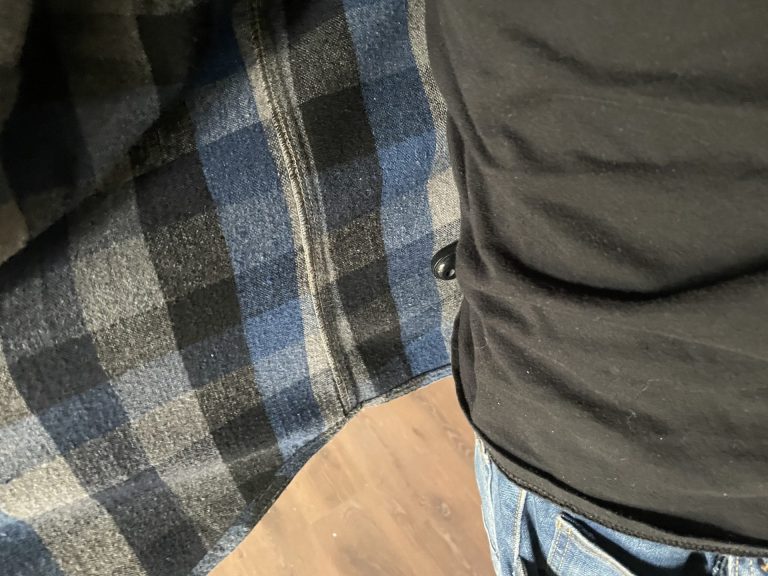
This scout carry configuration – with the ESEE Izula, specifically – is so comfortable, that I once slept outside in a tent on my back with the Izula on the back of my belt, and it neither diminished my comfort nor interrupted my sleep. A larger camp knife would.
So, anyway, without getting too far into the weeds of why I prefer scout carry, there are my two most practical ESEE Izula mods.
Do you have others? If so, leave them in the comments and I may try them and report back. I’ve seen a lot of suggestions to remove the powder coat of the blade, but not the two specific mods I’m advocating for here.
Be safe.
~The Eclectic Outfitter
Updated ESEE Izula Mods: Paracord Wrap the Tang

Since the first ESEE Izula I had, the black one pictured through most of the article, came with G10 scales, it didn’t occur to me that a practical mod is to wrap the tang with paracord.
That is, however, a highly practical ESEE Izula mod, as you can see from my brightly-wrapped venom green Izula below.
Unfortunately, that one is already wrapped. So instead, for a tutorial on how to wrap it, see my new post “How to Wrap an ESEE Candiru with Paracord.”
Also, a word of justification on why it’s a great mod:
Wrapping the tang with paracord gives you much better grip than if you have an exposed tang, and since ESEE usually sells the Izula without scales, pcord wrap is a great mod.
Including a lanyard at the end of the wrap extends the usable length of the tang, which is not so much a huge deal with the Izula but it is with the Candiru.
If you do it right, you can easily reverse the wrap and take the paracord off if you ever need cordage.
If you use a brightly colored paracord, as I have, it will improve the visibility of the knife in the field so it will be harder to misplace, or worse, lose.
Paracord is softer than other knife scale materials like wood, plastic, and G10, which means it won’t last as long – but when it does wear out, it’s a snap to replace.
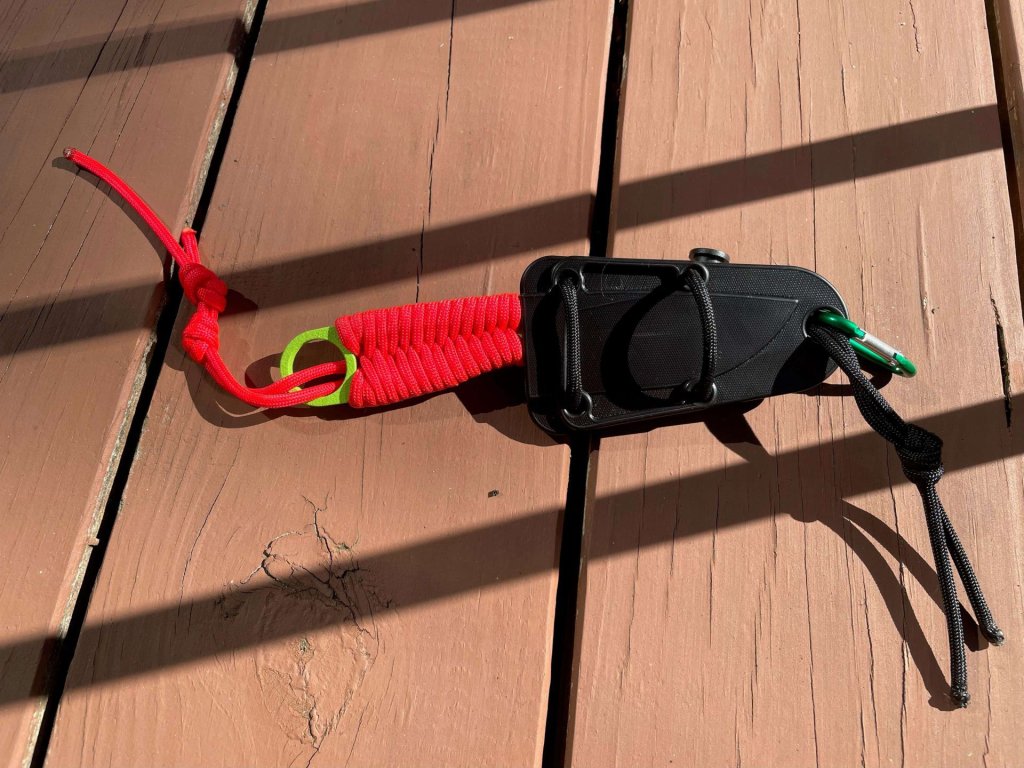
ESEE Izula Sheath Mod: Carabiner Clip Carry
One more ESEE Izula mod I’ve come by over the months, and that’s to attach a carabiner through the hole at the end of the sheath, as shown in the image above.
Normally, I scout carry my Izula, as I mentioned in this post, but adding a carabiner in this fashion makes it easier for me to attach the sheath to one of the D-rings on my pack or shooting vests, so I can carry the thing easily in the field when im hiking, fishing, hunting, or something else of that nature.

As you can see in the image above, it’s easy for me to attach the Izula to my pack if I want to bring it with me into the field. Or I can just clip it to one of the rings on my vest as in the image below when I’m traveling light.
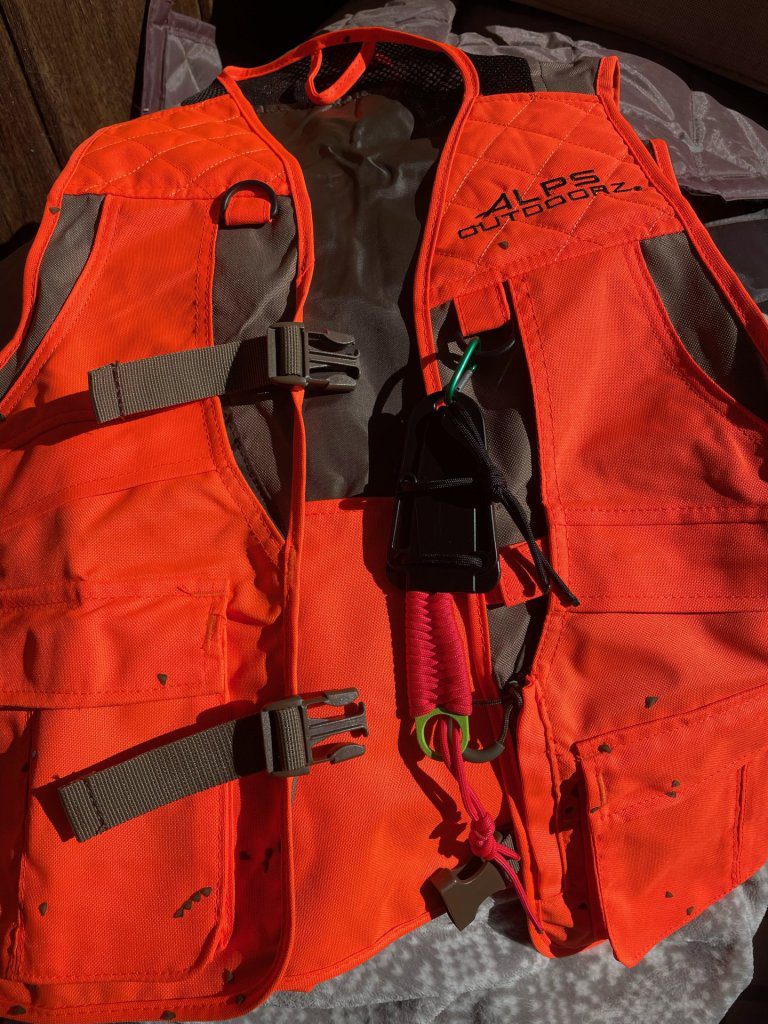
If carrying on a pack, I prefer to lash the sheath to the ring/strap, as I have done with other knives (not an Izula) because that offers much better sheath retention. But lashing is also not easily reversible, so for modularity, this method of carrying is much faster and easier, although slightly less secure.
All in all, I still prefer scout carry by a long margin, but sometimes with the knife mounted across the front left side of your body, it’s a lot easier to reach. This is also a ludicrously easy ESEE Izula sheath mod to make. Just attach the carabiner, clip it to your vest, and you’re good to go.
Any other mods you can think of that I missed?
